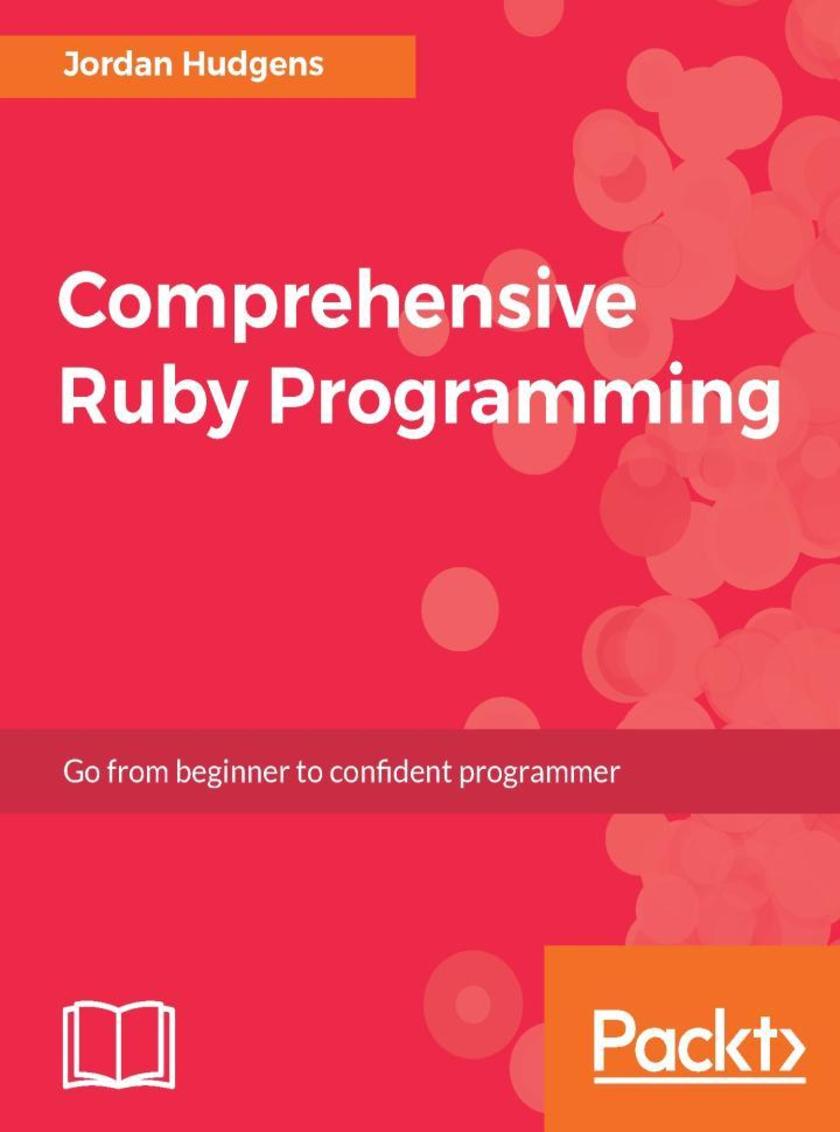
Comprehensive Ruby Programming
¥71.93
This book will provide you with all of the tools you need to be a professional Ruby developer. Starting with the core principles, such as syntax and best practices, and up to advanced topics like metaprogramming and big data analysis. About This Book ? Provides the core skills required to become a Ruby programmer ? Covers how to use the most popular Ruby Gem libraries ? Includes details on regular expressions Who This Book Is For This is a complete course written from the ground up for beginners wanting to gain a solid understanding of the Ruby language. It starts at the beginning with how to install Ruby and work with it on multiple machines, so simply have a computer that's connected to the Internet and you'll be ready. What You Will Learn ? Learn how to use Ruby code effectively, picking the right tool for the job and not duplicating built-in functionality ? Gain best software development practices, and how to identify and fix common errors ? Absorb core programming skills, such as variables, strings, loops, conditionals, and much more ? Explore object-oriented programming and learn to create modular, reusable code that you can use across projects ? Build 10 practical Ruby programs as you work through the book on topics such as big data analysis and solving Euler equations In Detail Ruby is a powerful, general-purpose programming language that can be applied to any task. Whether you are an experienced developer who wants to learn a new language or you are new to programming, this book is your comprehensive Ruby coding guide. Starting with the foundational principles, such as syntax, and scaling up to advanced topics such as big data analysis, this book will give you all of the tools you need to be a professional Ruby developer. A few of the key topics are: object-oriented programming, built-in Ruby methods, core programming skills, and an introduction to the Ruby on Rails and Sinatra web frameworks. You will also build 10 practical Ruby programs. Created by an experienced Ruby developer, this book has been written to ensure it focuses on the skills you will need to be a professional Ruby developer. After you have read this book, you will be ready to start building real-world Ruby projects. Style and approach This is a comprehensive course for learning the Ruby programming language that works methodically through everything that you need to know. It begins with the basics of the language and then works through some complete projects to apply your skills and ensure that you have fully absorbed them and can use them in the real world.
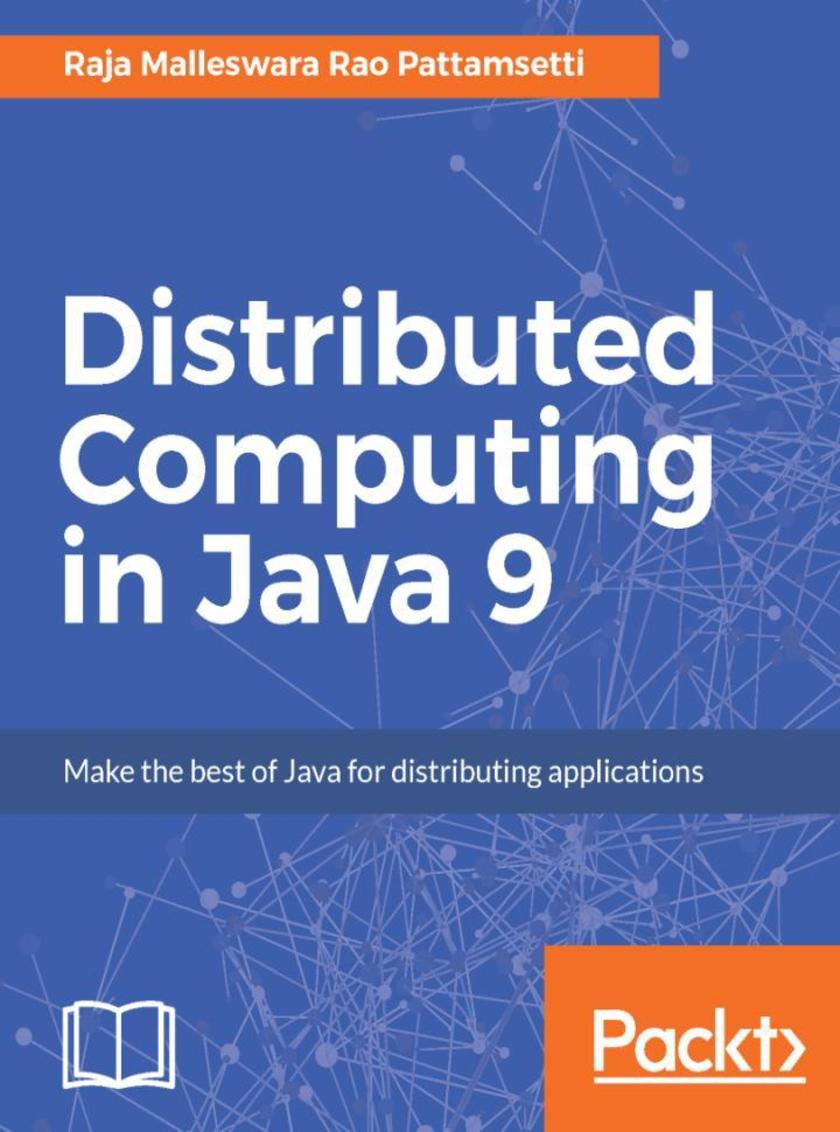
Distributed Computing in Java 9
¥80.65
Explore the power of distributed computing to write concurrent, scalable applications in Java About This Book ? Make the best of Java 9 features to write succinct code ? Handle large amounts of data using HPC ? Make use of AWS and Google App Engine along with Java to establish a powerful remote computation system Who This Book Is For This book is for basic to intermediate level Java developers who is aware of object-oriented programming and Java basic concepts. What You Will Learn ? Understand the basic concepts of parallel and distributed computing/programming ? Achieve performance improvement using parallel processing, multithreading, concurrency, memory sharing, and hpc cluster computing ? Get an in-depth understanding of Enterprise Messaging concepts with Java Messaging Service and Web Services in the context of Enterprise Integration Patterns ? Work with Distributed Database technologies ? Understand how to develop and deploy a distributed application on different cloud platforms including Amazon Web Service and Docker CaaS Concepts ? Explore big data technologies ? Effectively test and debug distributed systems ? Gain thorough knowledge of security standards for distributed applications including two-way Secure Socket Layer In Detail Distributed computing is the concept with which a bigger computation process is accomplished by splitting it into multiple smaller logical activities and performed by diverse systems, resulting in maximized performance in lower infrastructure investment. This book will teach you how to improve the performance of traditional applications through the usage of parallelism and optimized resource utilization in Java 9. After a brief introduction to the fundamentals of distributed and parallel computing, the book moves on to explain different ways of communicating with remote systems/objects in a distributed architecture. You will learn about asynchronous messaging with enterprise integration and related patterns, and how to handle large amount of data using HPC and implement distributed computing for databases. Moving on, it explains how to deploy distributed applications on different cloud platforms and self-contained application development. You will also learn about big data technologies and understand how they contribute to distributed computing. The book concludes with the detailed coverage of testing, debugging, troubleshooting, and security aspects of distributed applications so the programs you build are robust, efficient, and secure. Style and approach This is a step-by-step practical guide with real-world examples.
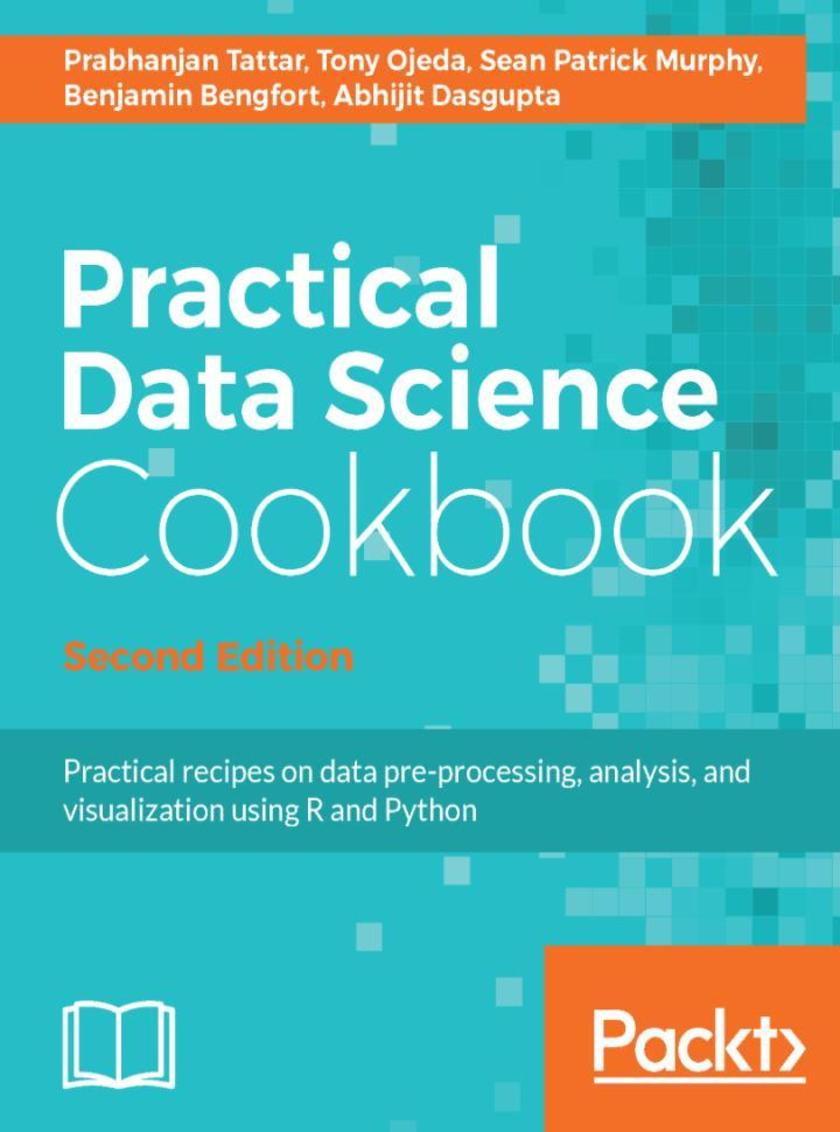
Practical Data Science Cookbook - Second Edition
¥80.65
Over 85 recipes to help you complete real-world data science projects in R and Python About This Book ? Tackle every step in the data science pipeline and use it to acquire, clean, analyze, and visualize your data ? Get beyond the theory and implement real-world projects in data science using R and Python ? Easy-to-follow recipes will help you understand and implement the numerical computing concepts Who This Book Is For If you are an aspiring data scientist who wants to learn data science and numerical programming concepts through hands-on, real-world project examples, this is the book for you. Whether you are brand new to data science or you are a seasoned expert, you will benefit from learning about the structure of real-world data science projects and the programming examples in R and Python. What You Will Learn ? Learn and understand the installation procedure and environment required for R and Python on various platforms ? Prepare data for analysis by implement various data science concepts such as acquisition, cleaning and munging through R and Python ? Build a predictive model and an exploratory model ? Analyze the results of your model and create reports on the acquired data ? Build various tree-based methods and Build random forest In Detail As increasing amounts of data are generated each year, the need to analyze and create value out of it is more important than ever. Companies that know what to do with their data and how to do it well will have a competitive advantage over companies that don’t. Because of this, there will be an increasing demand for people that possess both the analytical and technical abilities to extract valuable insights from data and create valuable solutions that put those insights to use. Starting with the basics, this book covers how to set up your numerical programming environment, introduces you to the data science pipeline, and guides you through several data projects in a step-by-step format. By sequentially working through the steps in each chapter, you will quickly familiarize yourself with the process and learn how to apply it to a variety of situations with examples using the two most popular programming languages for data analysis—R and Python. Style and approach This step-by-step guide to data science is full of hands-on examples of real-world data science tasks. Each recipe focuses on a particular task involved in the data science pipeline, ranging from readying the dataset to analytics and visualization

vSphere High Performance Cookbook - Second Edition
¥90.46
Over 80 recipes to help you improve vSphere 6.5's performance and solve problems before they arise About This Book ? The practical recipes provide cost-effective and high performance for any application running in a virtual machine ? Contains best practices and troubleshooting techniques to resolve vSphere 6.5 performance issues ? Get a comprehensive coverage of performance issues and solutions including vCenter Server design and virtual machine and application tuning Who This Book Is For If you are a system administrator and are planning to deploy vSphere 6.5 in your organization and want to maximize its performance, then this book is for you. Prior knowledge of the vSphere 6.5 concepts is essential. What You Will Learn ? Understand the VMM Scheduler, cache aware CPU Scheduler, NUMA aware CPU Scheduler, and more during the CPU Performance Design phase ? Get to know the virtual memory reclamation technique, host ballooning monitoring, and swapping activity ? Choose the right platform while designing your vCenter Server, redundant vCenter design, and vCenter SSO and its deployment ? Learn how to use various performance simulation tools ? Design VCSA Server Certificates to minimize security threats ? Use health check tools for storage and boost vSphere 6.5's performance with VAAI and VASA In Detail vSphere is a mission-critical piece of software for many businesses. It is a complex tool, and incorrect design and deployment can create performance related issues that can negatively affect the business. This book is focused on solving these problems as well as providing best practices and performance-enhancing techniques. This edition is fully updated to include all the new features in version 6.5 as well as the latest tools and techniques to keep vSphere performing at its best. This book starts with interesting recipes, such as the interaction of vSphere 6.5 components with physical layers such as CPU, memory, and networking. Then we focus on DRS, resource control design, and vSphere cluster design. Next, you'll learn about storage performance design and how it works with VMware vSphere 6.5. Moving on, you will learn about the two types of vCenter installation and the benefits of each. Lastly, the book covers performance tools that help you get the most out of your vSphere installation. By the end of this book, you will be able to identify, diagnose, and troubleshoot operational faults and critical performance issues in vSphere 6.5. Style and approach This cookbook is written in a practical, helpful style with numerous recipes focusing on answering and providing solutions to common and not-so-common performance issues and problems.
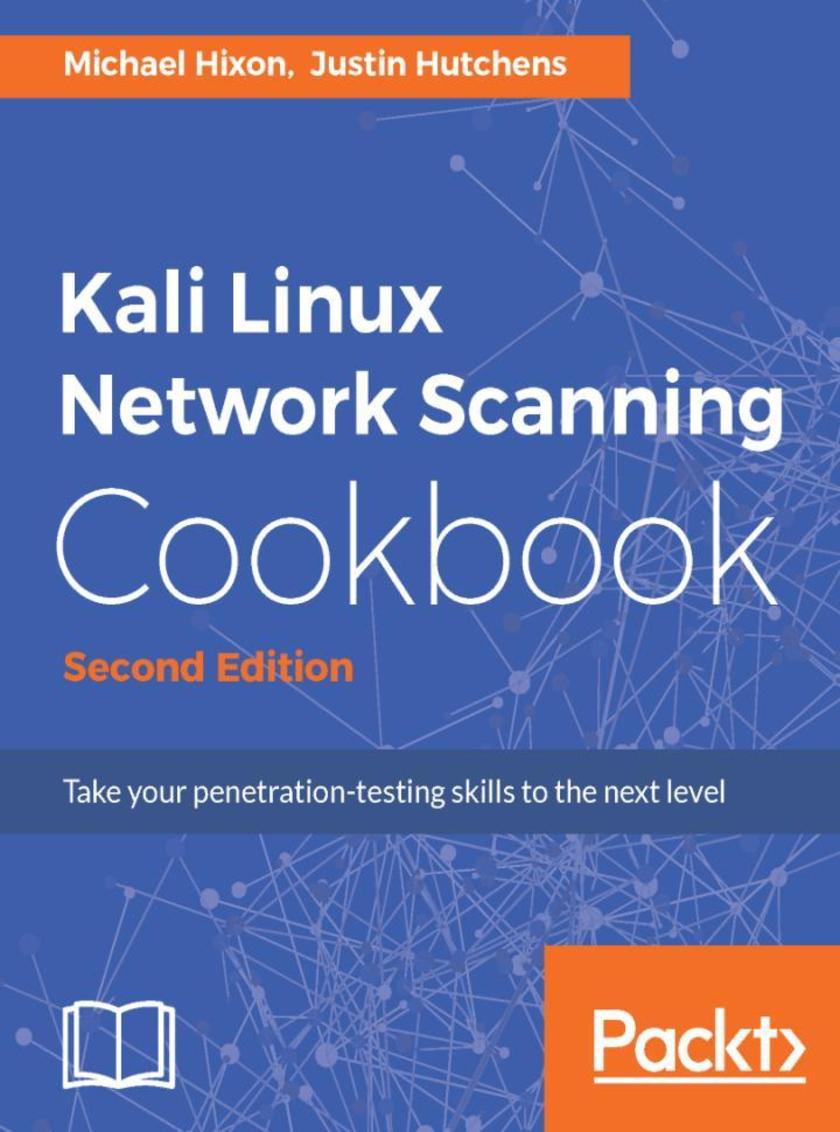
Kali Linux Network Scanning Cookbook - Second Edition
¥90.46
Over 100 practical recipes that leverage custom *s and integrated tools in Kali Linux to help you effectively master network scanning About This Book ? Learn the fundamentals behind commonly used scanning techniques ? Deploy powerful scanning tools that are integrated into the Kali Linux testing platform ? The practical recipes will help you automate menial tasks and build your own * library Who This Book Is For This book is for information security professionals and casual security enthusiasts alike. It provides foundational principles if you’re a novice, but will also introduce *ing techniques and in-depth analysis if you’re more advanced. Whether you are brand new to Kali Linux or a seasoned veteran, this book will help you both understand and ultimately master many of the most powerful and useful scanning techniques in the industry. It is assumed that you have some basic security testing experience. What You Will Learn ? Develop a network-testing environment to test scanning tools and techniques ? Understand the principles of network-scanning tools by building *s and tools ? Identify distinct vulnerabilities in web apps and remote services and learn how they are exploited ? Perform comprehensive scans to identify listening on TCP and UDP sockets ? Get started with different Kali desktop environments--KDE, MATE, LXDE, and Xfce ? Use Sparta for information gathering, port scanning, fingerprinting, vulnerability scanning, and more ? Evaluate DoS threats and learn how common DoS attacks are performed ? Learn how to use Burp Suite to evaluate web applications In Detail With the ever-increasing amount of data flowing in today’s world, information security has become vital to any application. This is where Kali Linux comes in. Kali Linux focuses mainly on security auditing and penetration testing. This step-by-step cookbook on network scanning trains you in important scanning concepts based on version 2016.2. It will enable you to conquer any network environment through a range of network scanning techniques and will also equip you to * your very own tools. Starting with the fundamentals of installing and managing Kali Linux, this book will help you map your target with a wide range of network scanning tasks, including discovery, port scanning, fingerprinting, and more. You will learn how to utilize the arsenal of tools available in Kali Linux to conquer any network environment. The book offers expanded coverage of the popular Burp Suite and has new and updated *s for automating scanning and target exploitation. You will also be shown how to identify remote services, how to assess security risks, and how various attacks are performed. You will cover the latest features of Kali Linux 2016.2, which includes the enhanced Sparta tool and many other exciting updates. This immersive guide will also encourage the creation of personally *ed tools and the skills required to create them. Style and approach This step-by-step guide is full of recipes that will help you use integrated scanning tools in Kali Linux and develop custom *s to make new and unique tools of your own.
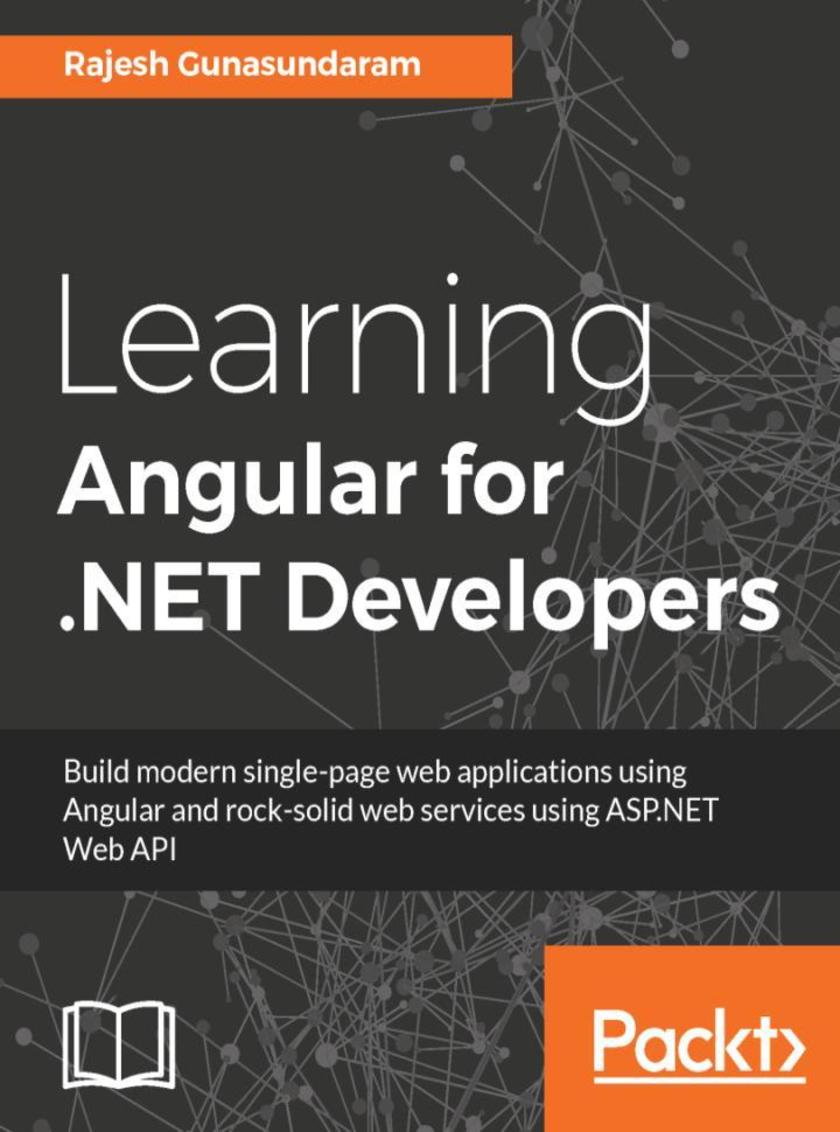
Learning Angular for .NET Developers
¥71.93
Build efficient web apps and deliver great results by integrating Angular and the .NET framework About This Book ? Become a more productive developer and learn to use frameworks that implement good development practices ? Achieve advanced autocompletion, navigation, and refactoring in Angular using Type* ? Follow a gradual introduction to the concepts with a lot of examples and explore the evolution of a production-ready application Who This Book Is For If you are a .NET developer who now wants to efficiently build single-page applications using the new features that Angular 4 has to offer, then this book is for you. Familiarity of HTML, CSS, and JavaScript is assumed to get the most from this book. What You Will Learn ? Create a standalone Angular application to prototype user interfaces ? Validate complex forms with Angular version 4 and use Bootstrap to style them ? Build RESTful web services that work well with single-page applications ? Use Gulp and Bower in Visual Studio to run tasks and manage JavaScript packages ? Implement automatic validation for web service requests to reduce your boilerplate code ? Use web services with Angular version 4 to offload and secure your application logic ? Test your Angular version 4 and web service code to improve the quality of your software deliverables In Detail Are you are looking for a better, more efficient, and more powerful way of building front-end web applications? Well, look no further, you have come to the right place! This book comprehensively integrates Angular version 4 into your tool belt, then runs you through all the new options you now have on hand for your web apps without bogging you down. The frameworks, tools, and libraries mentioned here will make your work productive and minimize the friction usually associated with building server-side web applications. Starting off with building blocks of Angular version 4, we gradually move into integrating TypeScript and ES6. You will get confident in building single page applications and using Angular for prototyping components. You will then move on to building web services and full-stack web application using ASP.NET WebAPI. Finally, you will learn the development process focused on rapid delivery and testability for all application layers. Style and approach This book covers everything there is to know about getting well-acquainted with Angular 4 and .NET without bogging you down. Everything is neatly laid out under clear headings for quick consultation, offering you the information required to understand a concept immediately, with short, relevant examples of each feature.
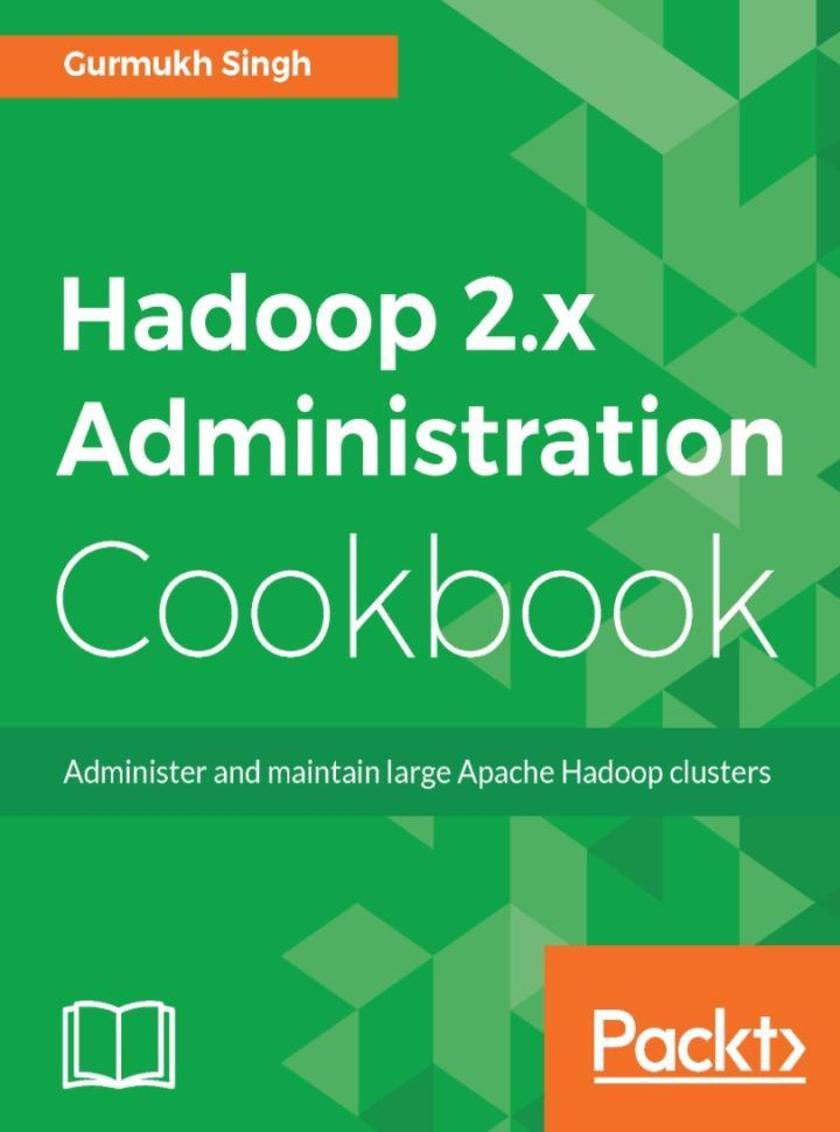
Hadoop 2.x Administration Cookbook
¥90.46
Over 100 practical recipes to help you become an expert Hadoop administrator About This Book ? Become an expert Hadoop administrator and perform tasks to optimize your Hadoop Cluster ? Import and export data into Hive and use Oozie to manage workflow. ? Practical recipes will help you plan and secure your Hadoop cluster, and make it highly available Who This Book Is For If you are a system administrator with a basic understanding of Hadoop and you want to get into Hadoop administration, this book is for you. It’s also ideal if you are a Hadoop administrator who wants a quick reference guide to all the Hadoop administration-related tasks and solutions to commonly occurring problems What You Will Learn ? Set up the Hadoop architecture to run a Hadoop cluster smoothly ? Maintain a Hadoop cluster on HDFS, YARN, and MapReduce ? Understand high availability with Zookeeper and Journal Node ? Configure Flume for data ingestion and Oozie to run various workflows ? Tune the Hadoop cluster for optimal performance ? Schedule jobs on a Hadoop cluster using the Fair and Capacity scheduler ? Secure your cluster and troubleshoot it for various common pain points In Detail Hadoop enables the distributed storage and processing of large datasets across clusters of computers. Learning how to administer Hadoop is crucial to exploit its unique features. With this book, you will be able to overcome common problems encountered in Hadoop administration. The book begins with laying the foundation by showing you the steps needed to set up a Hadoop cluster and its various nodes. You will get a better understanding of how to maintain Hadoop cluster, especially on the HDFS layer and using YARN and MapReduce. Further on, you will explore durability and high availability of a Hadoop cluster. You’ll get a better understanding of the schedulers in Hadoop and how to configure and use them for your tasks. You will also get hands-on experience with the backup and recovery options and the performance tuning aspects of Hadoop. Finally, you will get a better understanding of troubleshooting, diagnostics, and best practices in Hadoop administration. By the end of this book, you will have a proper understanding of working with Hadoop clusters and will also be able to secure, encrypt it, and configure auditing for your Hadoop clusters. Style and approach This book contains short recipes that will help you run a Hadoop cluster efficiently. The recipes are solutions to real-life problems that administrators encounter while working with a Hadoop cluster
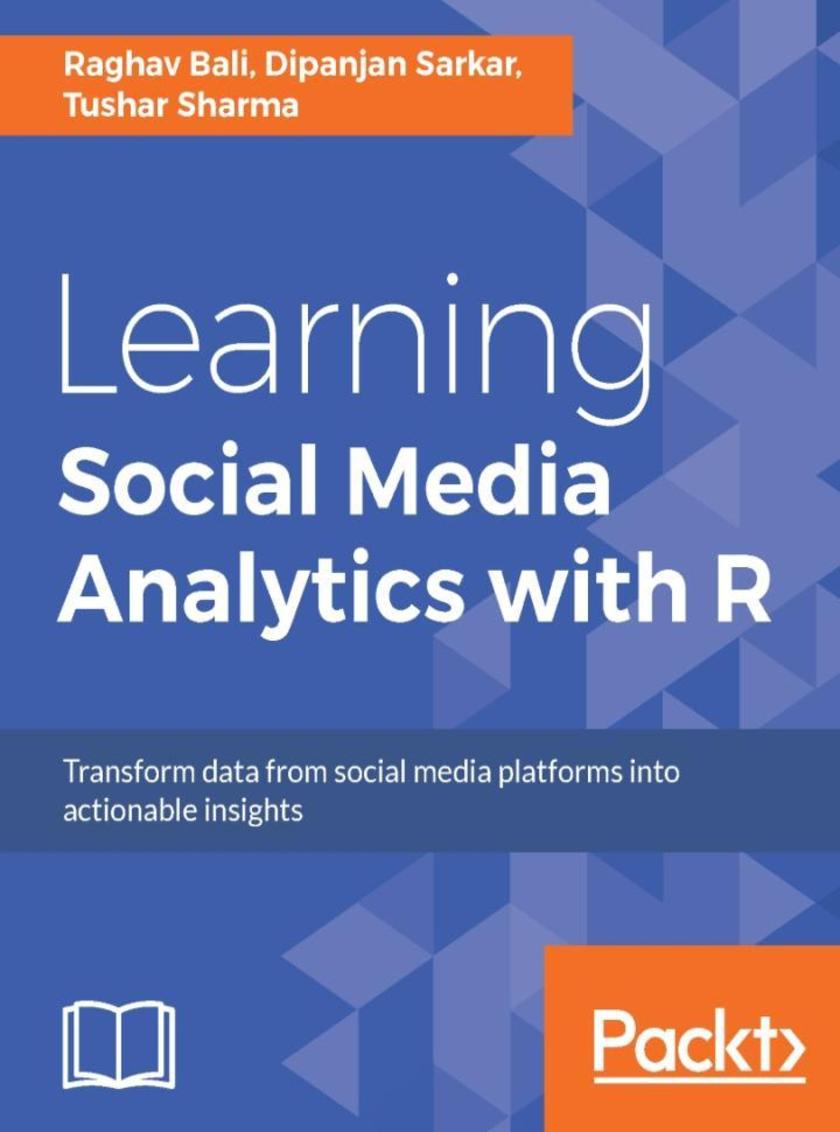
Learning Social Media Analytics with R
¥90.46
Tap into the realm of social media and unleash the power of analytics for data-driven insights using R About This Book ? A practical guide written to help leverage the power of the R eco-system to extract, process, analyze, visualize and model social media data ? Learn about data access, retrieval, cleaning, and curation methods for data originating from various social media platforms. ? Visualize and analyze data from social media platforms to understand and model complex relationships using various concepts and techniques such as Sentiment Analysis, Topic Modeling, Text Summarization, Recommendation Systems, Social Network Analysis, Classification, and Clustering. Who This Book Is For It is targeted at IT professionals, Data Scientists, Analysts, Developers, Machine Learning Enthusiasts, social media marketers and anyone with a keen interest in data, analytics, and generating insights from social data. Some background experience in R would be helpful, but not necessary, since this book is written keeping in mind, that readers can have varying levels of expertise. What You Will Learn ? Learn how to tap into data from diverse social media platforms using the R ecosystem ? Use social media data to formulate and solve real-world problems ? Analyze user social networks and communities using concepts from graph theory and network analysis ? Learn to detect opinion and sentiment, extract themes, topics, and trends from unstructured noisy text data from diverse social media channels ? Understand the art of representing actionable insights with effective visualizations ? Analyze data from major social media channels such as Twitter, Facebook, Flickr, Foursquare, Github, StackExchange, and so on ? Learn to leverage popular R packages such as ggplot2, topicmodels, caret, e1071, tm, wordcloud, twittR, Rfacebook, dplyr, reshape2, and many more In Detail The Internet has truly become humongous, especially with the rise of various forms of social media in the last decade, which give users a platform to express themselves and also communicate and collaborate with each other. This book will help the reader to understand the current social media landscape and to learn how analytics can be leveraged to derive insights from it. This data can be analyzed to gain valuable insights into the behavior and engagement of users, organizations, businesses, and brands. It will help readers frame business problems and solve them using social data. The book will also cover several practical real-world use cases on social media using R and its advanced packages to utilize data science methodologies such as sentiment analysis, topic modeling, text summarization, recommendation systems, social network analysis, classification, and clustering. This will enable readers to learn different hands-on approaches to obtain data from diverse social media sources such as Twitter and Facebook. It will also show readers how to establish detailed workflows to process, visualize, and analyze data to transform social data into actionable insights. Style and approach This book follows a step-by-step approach with detailed strategies for understanding, extracting, analyzing, visualizing, and modeling data from several major social network platforms such as Facebook, Twitter, Foursquare, Flickr, Github, and StackExchange. The chapters cover several real-world use cases and leverage data science, machine learning, network analysis, and graph theory concepts along with the R ecosystem, including popular packages such as ggplot2, caret,dplyr, topicmodels, tm, and so on.
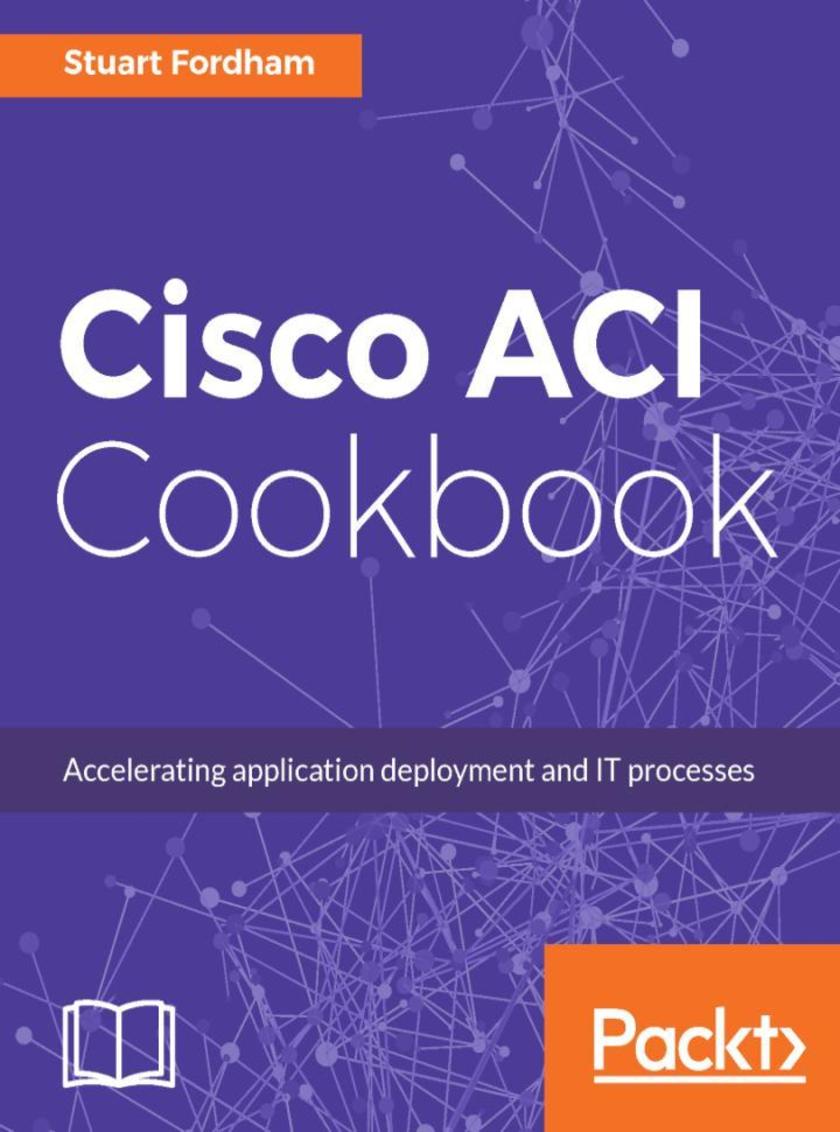
Cisco ACI Cookbook
¥90.46
Over 90 recipes to maximize automated solutions and policy-drive application profiles using Cisco ACI About This Book ? Confidently provision your virtual and physical infrastructure for application deployment ? Integrate Cisco ACI with hypervisors and other third party devices ? Packed with powerful recipes to automate your IT operations Who This Book Is For If you are a network administrator, system administrator, or engineer and are aware of the basics of Cisco ACI but want to start using it to automate your tasks, then this book is for you What You Will Learn ? Master the Cisco ACI architecture ? Discover the ACI fabric with easy-to-follow steps ? Set up quality of service within ACI ? Configure external networks with Cisco ACI ? Integrate with VMware and track VMware virtual machines ? Configure apply and verify access policies ? Extend or migrate a VMware virtual-machine LAN inside the ACI fabric ? Monitor ACI with third party tools and troubleshoot issues In Detail Cisco Application Centric Infrastructure (ACI) is a tough architecture that automates IT tasks and accelerates data-center application deployments. This book focuses on practical recipes to help you quickly build, manage, and customize hybrid environment for your organization using Cisco ACI. You will begin by understanding the Cisco ACI architecture and its major components. You will then configure Cisco ACI policies and tenants. Next you will connect to hypervisors and other third-party devices. Moving on, you will configure routing to external networks and within ACI tenants and also learn to secure ACI through RBAC. Furthermore, you will understand how to set up quality of service and network programming with REST, XML, Python and so on. Finally you will learn to monitor and troubleshoot ACI in the event of any issues that arise. By the end of the book, you will gain have mastered automating your IT tasks and accelerating the deployment of your applications. Style and approach A set of exciting recipes to automate your IT operations related to datacenters, the Cloud, and networking tasks
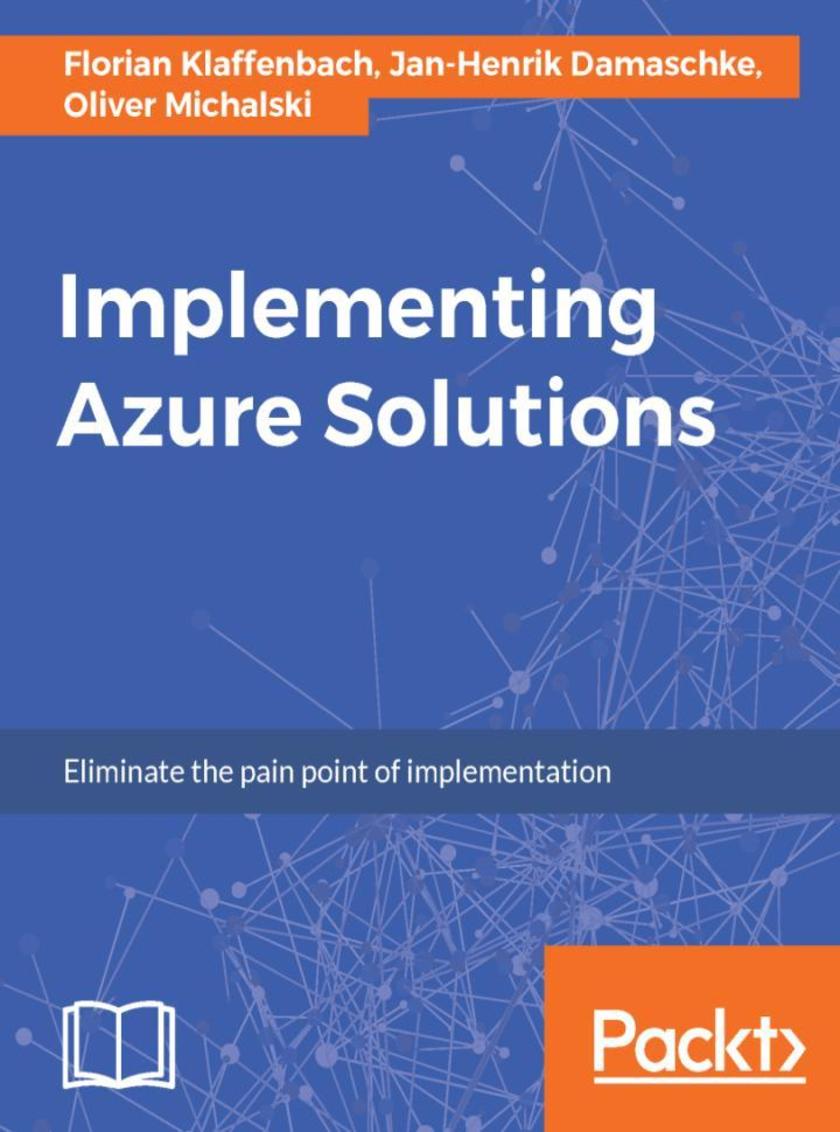
Implementing Azure Solutions
¥90.46
A practical guide that enhances your skills in implementing Azure solutions for your organization About This Book ? Confidently configure, deploy, and manage cloud services and virtual machines ? Implement a highly-secured environment and respond to threats with increased visibility ? This comprehensive guide is packed with exciting practical scenarios that enable you to implement Azure solutions with ease Who This Book Is For This book is for IT architects, system and network admins, and DevOps engineers who are aware of Azure solutions and want to implement them for their organization. What You Will Learn ? Implement virtual networks, network gateways, Site-to-Site VPN, ExpressRoute, routing, and network devices ? Understand the working of different storage accounts in Azure ? Plan, deploy, and secure virtual machines ? Deploy and manage Azure Containers ? Get familiar with some common Azure usage scenarios In Detail Microsoft Azure has numerous effective solutions that shape the future of any business. However, the major challenge that architects and administrators face are implementing these solutions appropriately. Our book focuses on various implementation scenarios that will help overcome the challenge of implementing Azure’s solutions in a very efficient manner and will also help you to prepare for Microsoft Architect exam. You will not only learn how to secure a newly deployed Azure Active Directory but also get to know how Azure Active Directory Synchronization could be implemented. To maintain an isolated and secure environment so that you can run your virtual machines and applications, you will implement Azure networking services. Also to manage, access, and secure your confidential data, you will implement storage solutions. Toward the end, you will explore tips and tricks to secure your environment. By the end, you will be able to implement Azure solutions such as networking, storage, and cloud effectively. Style and approach This step-by-step guide focuses on implementing various Azure solutions for your organization. The motive is to provide a comprehensive exposure and ensure they can implement these solutions with ease.
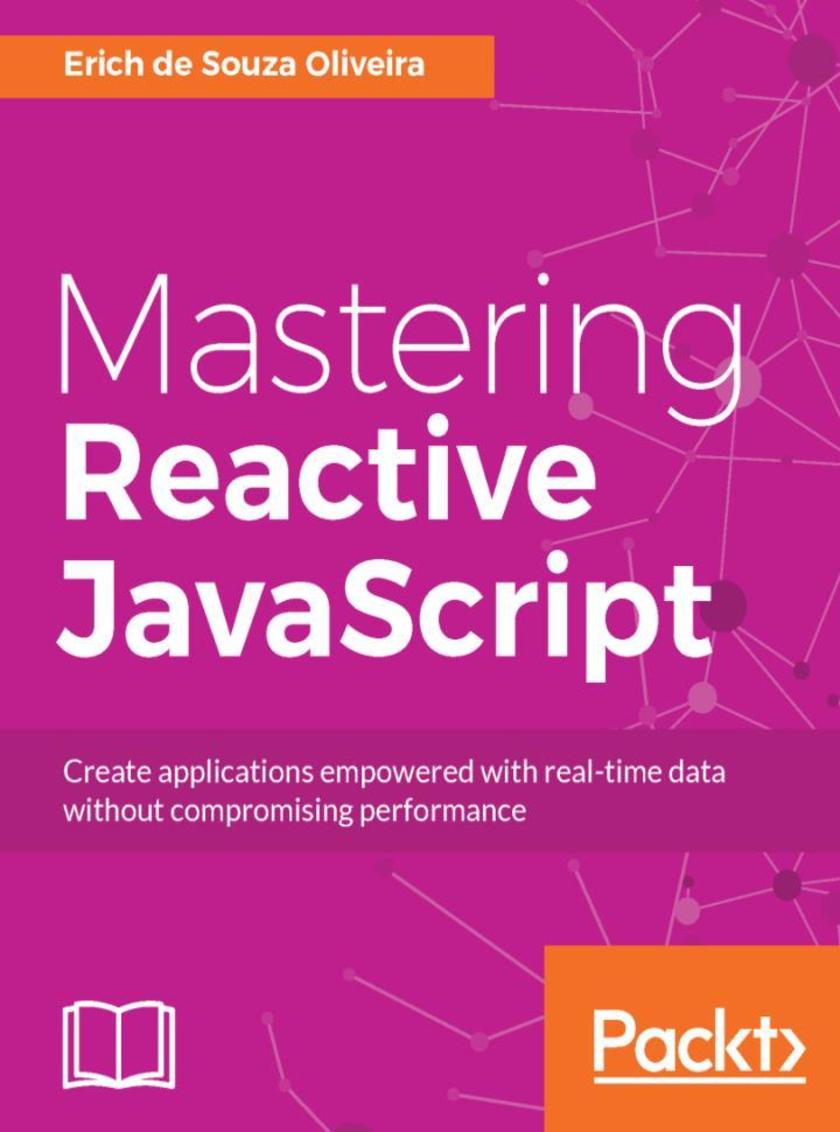
Mastering Reactive JavaScript
¥71.93
Expand your boundaries by creating applications empowered with real-time data using RxJs without compromising performance About This Book ? Handle an infinite stream of incoming data using RxJs without going crazy ? Explore important RxJs operators that can help you improve your code readability ? Get acquainted with the different techniques and operators used to handle data traffic, which occurs when you receive data faster than you can process Who This Book Is For If you're a web developer with some basic JavaScript programming knowledge who wants to implement the reactive programming paradigm with JavaScript, then this book is for you. What You Will Learn ? Get to know the basics of functional reactive programming using RxJs ? Process a continuous flow of data with linear memory consumption ? Filter, group, and react to changes in your system ? Discover how to deal with data traffic ? Compose operators to create new operators and use them in multiple observables to avoid code repetition ? Explore transducers and see how they can improve your code readability ? Detect and recover from errors in observables using Retry and Catch operators ? Create your own reactive application: a real-time webchat In Detail If you’re struggling to handle a large amount of data and don’t know how to improve your code readability, then reactive programming is the right solution for you. It lets you describe how your code behaves when changes happen and makes it easier to deal with real-time data. This book will teach you what reactive programming is, and how you can use it to write better applications. The book starts with the basics of reactive programming, what Reactive Extensions is, and how can you use it in JavaScript along with some reactive code using Bacon. Next, you’ll discover what an Observable and an Observer are and when to use them.You'll also find out how you can query data through operators, and how to use schedulers to react to changes. Moving on, you’ll explore the RxJs API, be introduced to the problem of data traffic (backpressure), and see how you can mitigate it. You’ll also learn about other important operators that can help improve your code readability, and you’ll see how to use transducers to compose operators. At the end of the book, you’ll get hands-on experience of using RxJs, and will create a real-time web chat using RxJs on the client and server, providing you with the complete package to master RxJs. Style and approach This easy-to-follow guide is full of hands-on examples of reactive programming. Each topic is explained and placed in context, and for the more inquisitive there are more details of the concepts used, ending with an application using the concepts learned through the book.
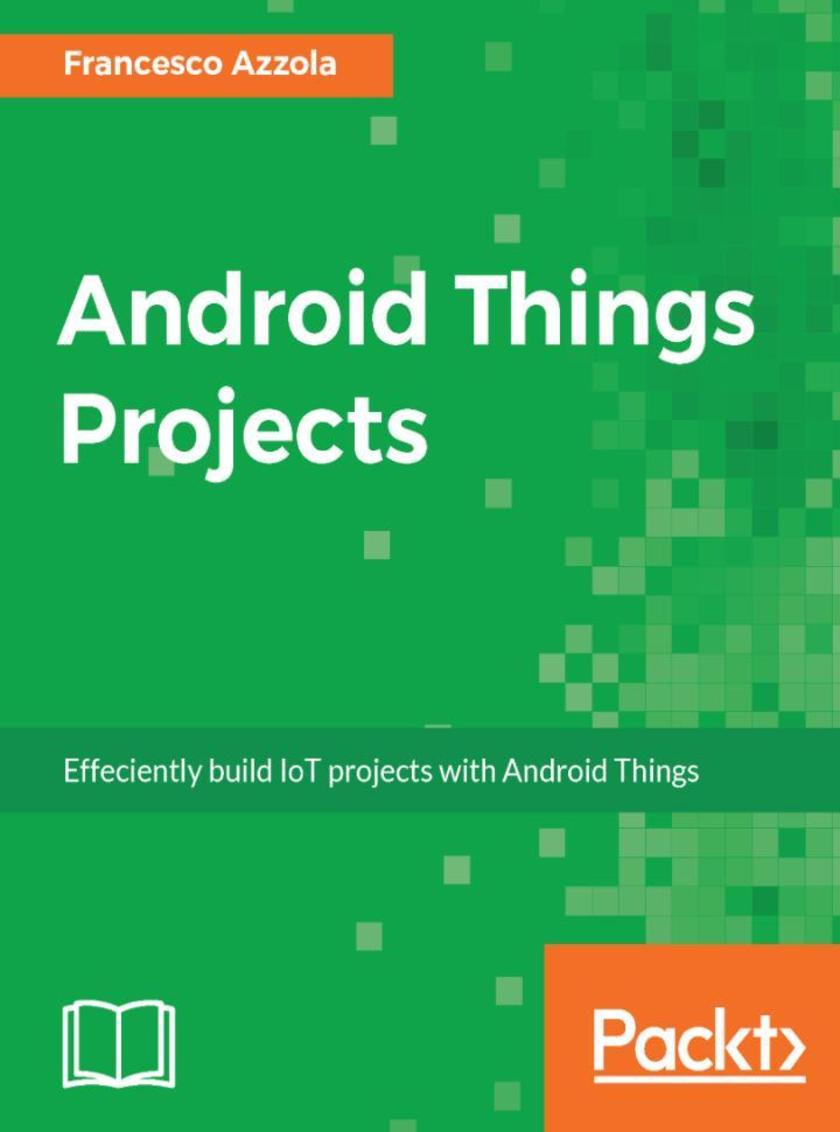
Android Things Projects
¥71.93
Develop smart Internet of things projects using Android Things. About This Book ? Learn to build promising IoT projects with Android Things ? Make the most out of hardware peripherals using standard Android APIs ? Build enticing projects on IoT, home automation, and robotics by leveraging Raspberry Pi 3 and Intel Edison Who This Book Is For This book is for Android enthusiasts, hobbyists, IoT experts, and Android developers who want to gain a deeper knowledge of Android Things. The main focus is on implementing IoT projects using Android Things. What You Will Learn ? Understand IoT ecosystem and the Android Things role ? See the Android Things framework: installation, environment, SDK, and APIs ? See how to effectively use sensors (GPIO and I2C Bus) ? Integrate Android Things with IoT cloud platforms ? Create practical IoT projects using Android Things ? Integrate Android Things with other systems using standard IoT protocols ? Use Android Things in IoT projects In Detail Android Things makes developing connected embedded devices easy by providing the same Android development tools, best-in-class Android framework, and Google APIs that make developers successful on mobile. With this book, you will be able to take advantage of the new Android framework APIs to securely build projects using low-level components such as sensors, resistors, capacitors, and display controllers. This book will teach you all you need to know about working with Android Things through practical projects based on home automation, robotics, IoT, and so on. We’ll teach you to make the most of the Android Things and build enticing projects such as a smart greenhouse that controls the climate and environment automatically. You’ll also create an alarm system, integrate Android Things with IoT cloud platforms, and more. By the end of this book, you will know everything about Android Things, and you’ll have built some very cool projects using the latest technology that is driving the adoption of IoT. You will also have primed your mindset so that you can use your knowledge for profitable, practical projects. Style and approach This book is packed with fun-filled, end-to-end projects that you will be encouraged to experiment on the Android Things OS.
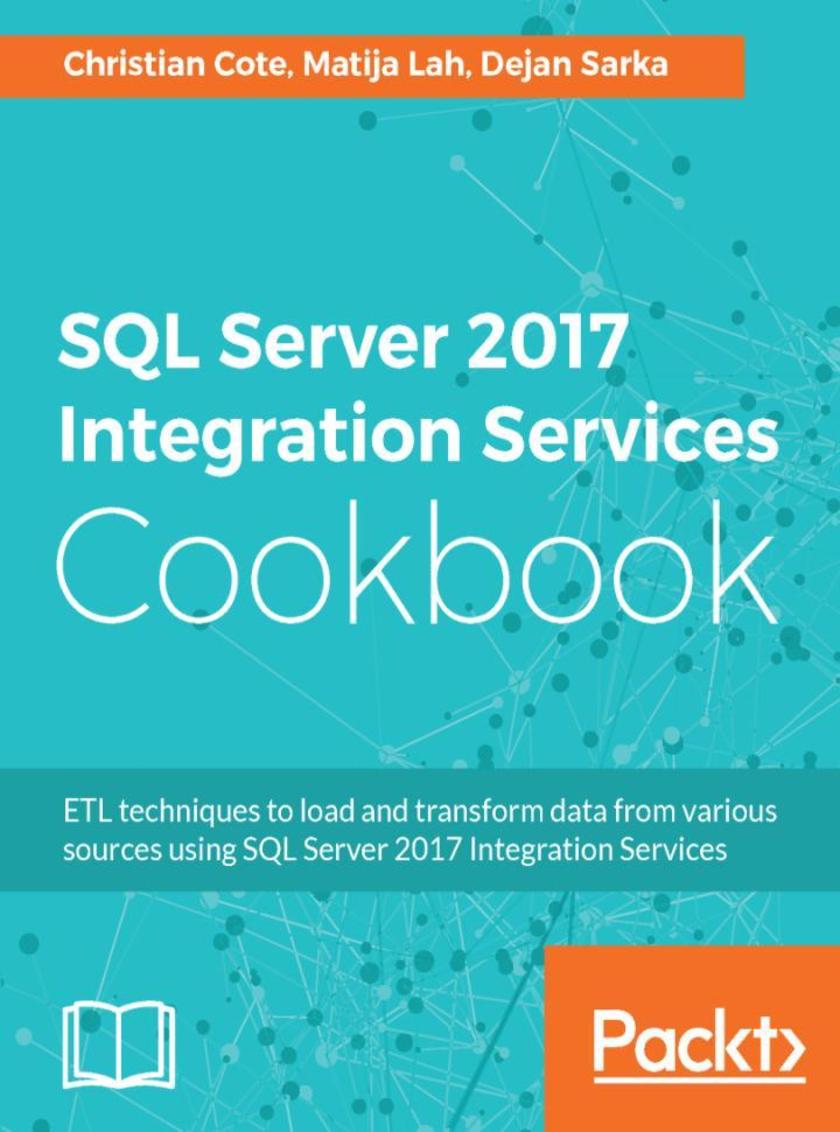
SQL Server 2017 Integration Services Cookbook
¥107.90
Harness the power of SQL Server 2017 Integration Services to build your data integration solutions with ease About This Book ? Acquaint yourself with all the newly introduced features in SQL Server 2017 Integration Services ? Program and extend your packages to enhance their functionality ? This detailed, step-by-step guide covers everything you need to develop efficient data integration and data transformation solutions for your organization Who This Book Is For This book is ideal for software engineers, DW/ETL architects, and ETL developers who need to create a new, or enhance an existing, ETL implementation with SQL Server 2017 Integration Services. This book would also be good for individuals who develop ETL solutions that use SSIS and are keen to learn the new features and capabilities in SSIS 2017. What You Will Learn ? Understand the key components of an ETL solution using SQL Server 2016-2017 Integration Services ? Design the architecture of a modern ETL solution ? Have a good knowledge of the new capabilities and features added to Integration Services ? Implement ETL solutions using Integration Services for both on-premises and Azure data ? Improve the performance and scalability of an ETL solution ? Enhance the ETL solution using a custom framework ? Be able to work on the ETL solution with many other developers and have common design paradigms or techniques ? Effectively use *ing to solve complex data issues In Detail SQL Server Integration Services is a tool that facilitates data extraction, consolidation, and loading options (ETL), SQL Server coding enhancements, data warehousing, and customizations. With the help of the recipes in this book, you’ll gain complete hands-on experience of SSIS 2017 as well as the 2016 new features, design and development improvements including SCD, Tuning, and Customizations. At the start, you’ll learn to install and set up SSIS as well other SQL Server resources to make optimal use of this Business Intelligence tools. We’ll begin by taking you through the new features in SSIS 2016/2017 and implementing the necessary features to get a modern scalable ETL solution that fits the modern data warehouse. Through the course of chapters, you will learn how to design and build SSIS data warehouses packages using SQL Server Data Tools. Additionally, you’ll learn to develop SSIS packages designed to maintain a data warehouse using the Data Flow and other control flow tasks. You’ll also be demonstrated many recipes on cleansing data and how to get the end result after applying different transformations. Some real-world scenarios that you might face are also covered and how to handle various issues that you might face when designing your packages. At the end of this book, you’ll get to know all the key concepts to perform data integration and transformation. You’ll have explored on-premises Big Data integration processes to create a classic data warehouse, and will know how to extend the toolbox with custom tasks and transforms. Style and approach This cookbook follows a problem-solution approach and tackles all kinds of data integration scenarios by using the capabilities of SQL Server 2016 Integration Services. This book is well supplemented with screenshots, tips, and tricks. Each recipe focuses on a particular task and is written in a very easy-to-follow manner.
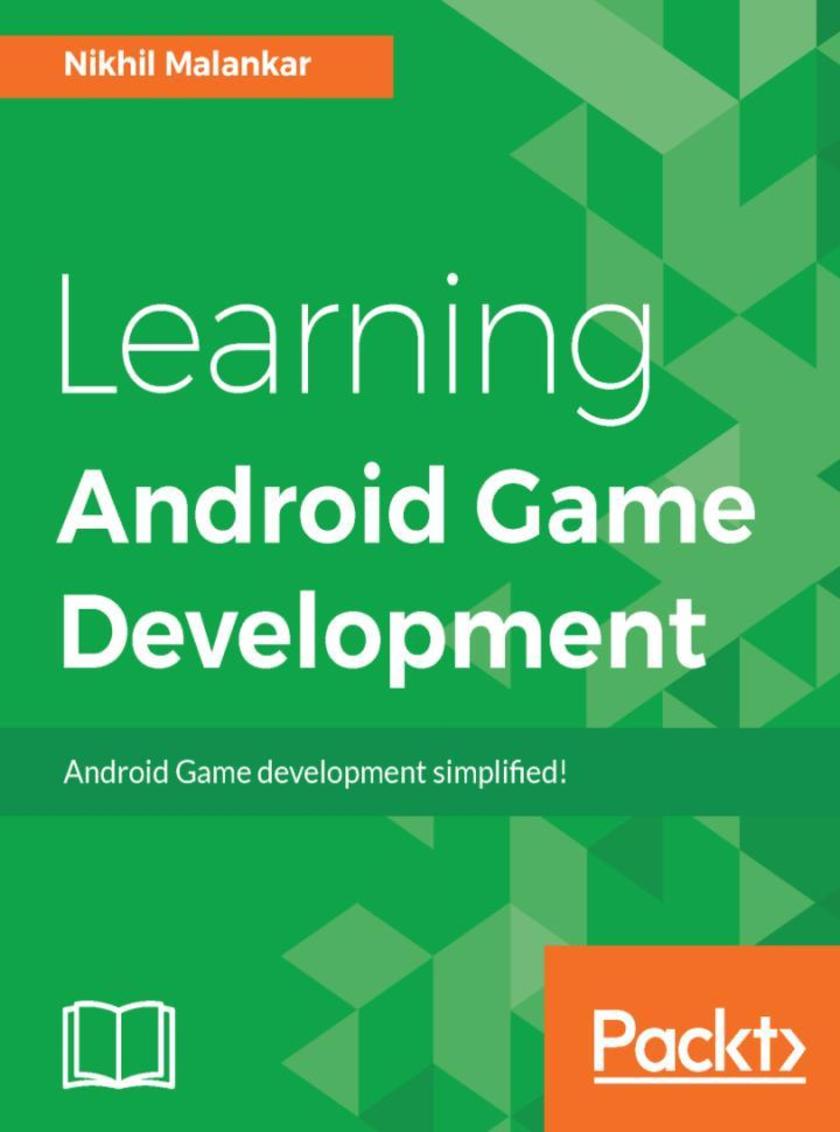
Learning Android Game Development
¥63.21
Learn the art of making Android games and turn your game development dreams into reality About This Book ? Leverage the latest features of Android N to create real-world 2D games ? Architect a 2D game from scratch and level up your Android game development skill ? Transition from developing simple 2D games to 3D games using basic Java code Who This Book Is For If you are a mobile developer who has basic Java programming knowledge, then this book is ideal for you. Previous Android development experience is not needed; however, basic mobile development knowledge is essential. What You Will Learn ? Understand the nuts and bolts of developing highly interactive and interesting games for Android N ? Link the interface to the code used in games through simple methods ? Interact with the images on the screen and also learn to animate them ? Set and save the game state and save high scores, hit points, and so on for your games ? Get a grasp of various collision techniques and implement the bounding box technique ? Convert your 2D games to 3D games using Android N ? Get an understanding of the process of UI creation using Android Studio In Detail In this book, we’ll start with installing Android studio and its components, and setting it up ready for Android N. We teach you how to take inputs from users, create images and interact with them, and work with sprites to create animations. You’ll then explore the various collision detection methods and use sprites to create an explosion. Moving on, you’ll go through the process of UI creation and see how to create buttons as well as display the score and other parameters on screen. By the end of the book, you will have a working example and an understanding of a 2D platform game like Super Mario and know how to convert your 2D games to 3D games. Style and approach This easy-to-understand guide follows a step-by-step approach to building games, and contains plenty of graphical examples for you to follow and grasp quickly, giving you the chance to implement the concepts practically.
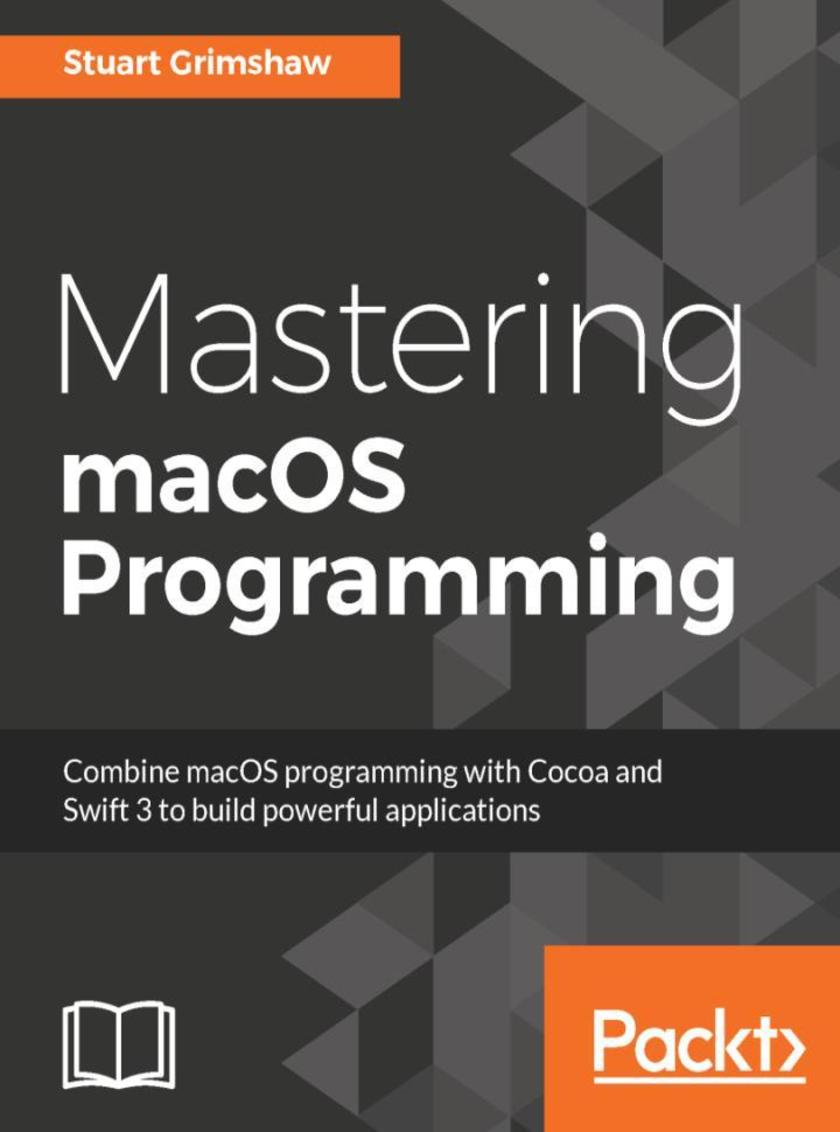
Mastering macOS Programming
¥80.65
Take your macOS Sierra to the next level using the latest tools, designs, and best coding practices while developing with Swift 3.0 About This Book ? Learn to harness the power of macOS with the elegance of the Swift programming language ? Become highly competent in building apps on the macOS platform ? Get the most in-depth guide with a hands-on approach on the latest version of macOS Who This Book Is For This book is for developers who have some experience with macOS and want to take their skills to next level by unlocking the full potential of latest version of macOS with Swift 3 to build impressive applications. Basic knowledge of Swift will be beneficial but is not required. What You Will Learn ? Combine beautiful design with robust code for the very best user experience ? Bring the best coding practices to the new macOS Sierra ? See what's new in Swift 3.0 and how best to leverage the Swift language ? Master Apple's tools, including Xcode, Interface Builder, and Instruments ? Use Unix and other common command-line tools to increase productivity ? Explore the essential Cocoa frameworks, including networking, animation, audio, and video In Detail macOS continues to lead the way in desktop operating systems, with its tight integration across the Apple ecosystem of platforms and devices. With this book, you will get an in-depth knowledge of working on macOS, enabling you to unleash the full potential of the latest version using Swift 3 to build applications. This book will help you broaden your horizons by taking your programming skills to next level. The initial chapters will show you all about the environment that surrounds a developer at the start of a project. It introduces you to the new features that Swift 3 and Xcode 8 offers and also covers the common design patterns that you need to know for planning anything more than trivial projects. You will then learn the advanced Swift programming concepts, including memory management, generics, protocol orientated and functional programming and with this knowledge you will be able to tackle the next several chapters that deal with Apple's own Cocoa frameworks. It also covers AppKit, Foundation, and Core Data in detail which is a part of the Cocoa umbrella framework. The rest of the book will cover the challenges posed by asynchronous programming, error handling, debugging, and many other areas that are an indispensable part of producing software in a professional environment. By the end of this book, you will be well acquainted with Swift, Cocoa, and AppKit, as well as a plethora of other essential tools, and you will be ready to tackle much more complex and advanced software projects. Style and approach This comprehensive guide takes a hands-on practical approach incorporating a visually-rich format rather than a text heavy format. The focus is on teaching the core concepts through a series of small projects and standalone examples so you gain expertise with various aspects of macOS application development.
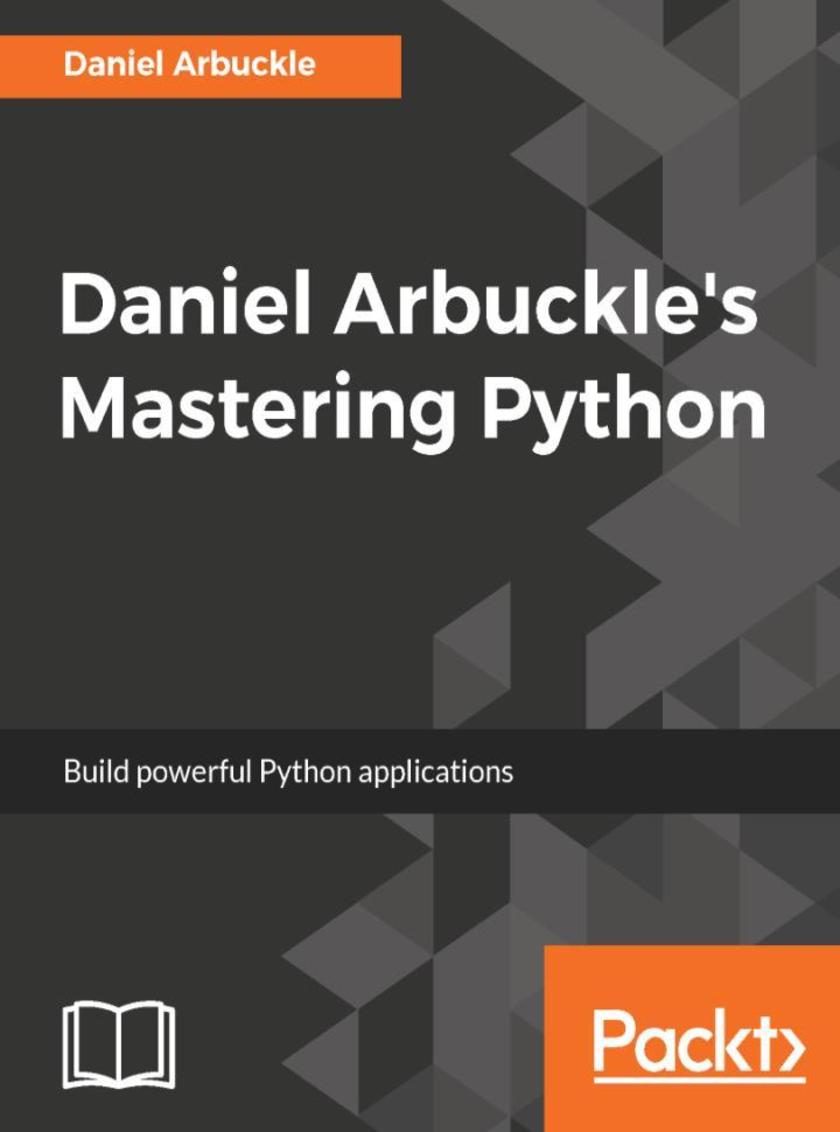
Daniel Arbuckle’s Mastering Python
¥71.93
Gain a thorough understanding of operating in a Python development environment, and some of the most important advanced topics with Daniel Arbuckle. This dynamic, concise book is full of real-world solutions for Python 3.6 problems, and advanced-level concepts such as reactive programming, microservices, ctypes and Cython. About This Book ? Covers the latest and advanced concepts of Python such as parallel processing with Python 3.6 ? Explore the Python language from its basic installation and setup to concepts such as reactive programming and microservices ? Get introduced to the mechanism for rewriting code in a compiled language along with ctypes and Cython tools Who This Book Is For If you are a programmer and are familiar with the basics of Python, and you want to broaden your knowledge base to develop projects better and faster, this book is for you. Even if you are not familiar with Python, Daniel Arbuckle's Mastering Python starts with the basics and takes you on a journey to become an expert in the technology. What You Will Learn ? Get to grips with the basics of operating in a Python development environment ? Build Python packages to efficiently create reusable code ? Become proficient at creating tools and utility programs in Python ? Use the Git version control system to protect your development environment from unwanted changes ? Harness the power of Python to automate other software ? Distribute computational tasks across multiple processors ? Handle high I/O loads with asynchronous I/O to get a smoother performance ? Take advantage of Python's metaprogramming and programmable syntax features ? Get acquainted with the concepts behind reactive programming and RxPy In Detail Daniel Arbuckle's Mastering Python covers the basics of operating in a Python development environment, before moving on to more advanced topics. Daniel presents you with real-world solutions to Python 3.6 and advanced-level concepts, such as reactive programming, microservices, ctypes, and Cython tools. You don't need to be familiar with the Python language to use this book, as Daniel starts with a Python primer. Throughout, Daniel highlights the major aspects of managing your Python development environment, shows you how to handle parallel computation, and helps you to master asynchronous I/O with Python 3.6 to improve performance. Finally, Daniel will teach you the secrets of metaprogramming and unit testing in Python, helping you acquire the perfect skillset to be a Python expert. Daniel will get you up to speed on everything from basic programming practices to high-end tools and techniques, things that will help set you apart as a successful Python programmer. Style and Approach Daniel Arbuckle's Mastering Python covers basic to advanced-level concepts in computer science. If you are a beginner, then Daniel will help you get started. If you are experienced, he will expand your knowledge base.
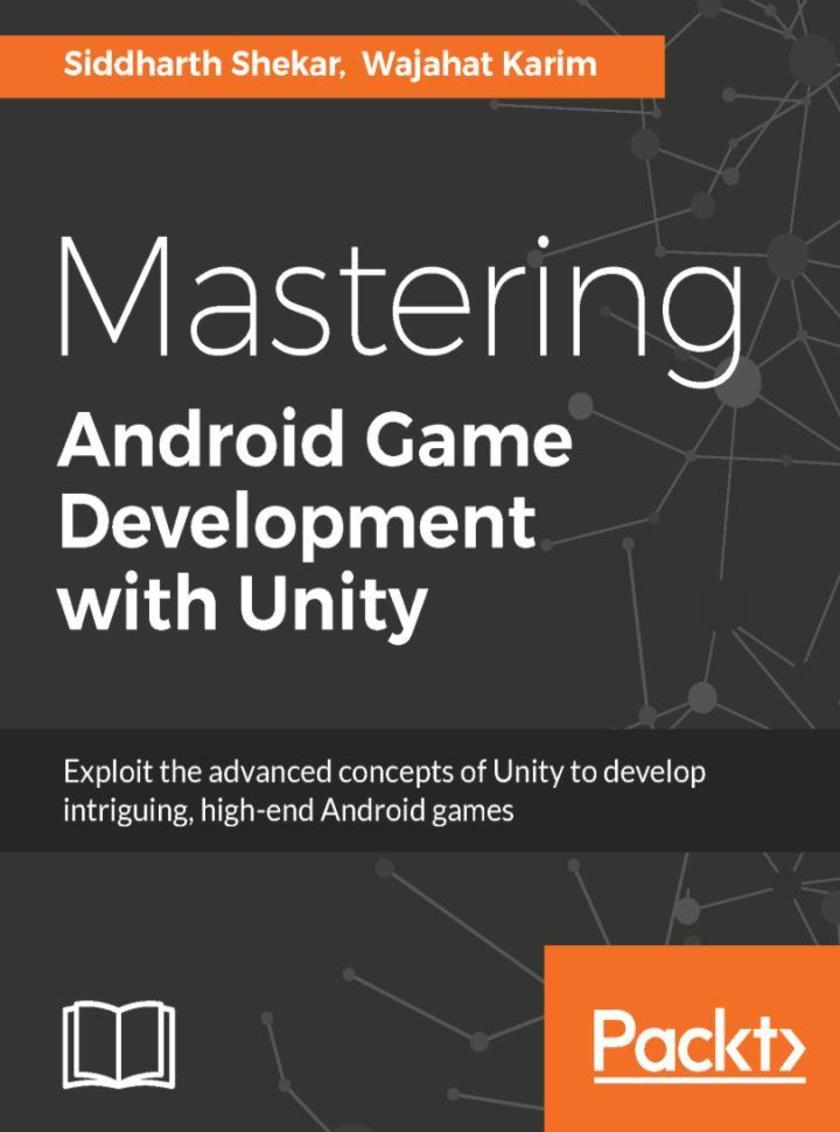
Mastering Android Game Development with Unity
¥67.57
Create enthralling Android games with Unity Faster Than Ever Before About This Book ? Develop complex Android games with the help of Unity's advanced features such as artificial intelligence, high-end physics, and GUI transformations. ? Create amazing Graphical User Interfaces (GUIs) with Unity's new uGUI system ? Unravel and deploy exciting games across Android devices Who This Book Is For If you are a Unity 5 developer and want to expand your knowledge of Unity 5 to create high-end complex Android games, then this book is for you. Readers are expected to have a basic understanding of Unity 5, working with its environment, and its basic concepts. What You Will Learn ? Develop your own Jetpack Joyride clone game ? Explore the advanced features of Unity 5 by building your own Action Fighting game ? Develop remarkable Graphical User Interfaces (GUIs) with Unity's new uGUI system ? Enhance your game by adding stunning particle systems and complex animations ? Build pleasing virtual worlds with special effects, lights, sky cube maps, and cameras ? Make your game more realistic by providing music and sound effects ? Debug and deploy your games on different Android devices In Detail Game engines such as Unity are the power-tools behind the games we know and love. Unity is one of the most widely-used and best loved packages for game development and is used by everyone, from hobbyists to large studios, to create games and interactive experiences for the Web, desktop, mobile, and console. With Unity's intuitive, easy-to-learn toolset and this book, it's never been easier to become a game developer. You will begin with the basic concepts of Android game development, a brief history of Android games, the building blocks of Android games in Unity 5, and the basic flow of games. You will configure an empty project for the Jetpack Joyride Clone Game, add an environment and characters, and control them. Next you will walk through topics such as particle systems, camera management, prefabs, animations, triggers, colliders, and basic GUI systems. You will then cover the basic setup for 3D action fighting games, importing models, textures and controlling them with a virtual on-screen joystick. Later you will set up Scene for 3D Configuration, create basic gameplays, and manage input controls. Next you will learn to create the interface for the main menu, gameplay, game over, achievements, and high score screens. Finally you will polish your game with stats, sounds, and Social Networking, followed by testing the game on Android devices and then publishing it on Google Play, Amazon, and OUYA Stores. Style and approach A step-by-step and detailed guide to developing high-end complex Android games utilizing the advanced concepts of Unity.

Python Data Structures and Algorithms
¥80.65
Implement classic and functional data structures and algorithms using Python About This Book ? A step by step guide, which will provide you with a thorough discussion on the analysis and design of fundamental Python data structures. ? Get a better understanding of advanced Python concepts such as big-o notation, dynamic programming, and functional data structures. ? Explore illustrations to present data structures and algorithms, as well as their analysis, in a clear, visual manner. Who This Book Is For The book will appeal to Python developers. A basic knowledge of Python is expected. What You Will Learn ? Gain a solid understanding of Python data structures. ? Build sophisticated data applications. ? Understand the common programming patterns and algorithms used in Python data science. ? Write efficient robust code. In Detail Data structures allow you to organize data in a particular way efficiently. They are critical to any problem, provide a complete solution, and act like reusable code. In this book, you will learn the essential Python data structures and the most common algorithms. With this easy-to-read book, you will be able to understand the power of linked lists, double linked lists, and circular linked lists. You will be able to create complex data structures such as graphs, stacks and queues. We will explore the application of binary searches and binary search trees. You will learn the common techniques and structures used in tasks such as preprocessing, modeling, and transforming data. We will also discuss how to organize your code in a manageable, consistent, and extendable way. The book will explore in detail sorting algorithms such as bubble sort, selection sort, insertion sort, and merge sort. By the end of the book, you will learn how to build components that are easy to understand, debug, and use in different applications. Style and approach The easy-to-read book with its fast-paced nature will improve the productivity of Python programmers and improve the performance of Python applications.

Bootstrap 4 Cookbook
¥80.65
Take your Bootstrap game to the next level with this practical guide About This Book ? Packed with easy-to-follow recipes on building responsive web pages with Bootstrap 4 that can be applied to a web project of your choice ? Build intuitive user interfaces that are mobile-ready with the latest features offered by BS4 ? Stay on top of the changes that Bootstrap 4 brings to front-end development ? Craft beautiful UIs and learn best practices, tips and tricks for quick, effortless, and proper Bootstrap 4 development Who This Book Is For If you are a web designer or a developer who is familiar with the basics of Bootstrap and now want to build highly responsive and professional web pages using Bootstrap 4, this cookbook is for you. Familiarity with the fundamentals of HTML, CSS and jQuery, and some experience of incorporating JavaScript plugins is assumed. What You Will Learn ? Craft beautiful UIs the right way ? Use jQuery and JavaScript to extend Bootstrap layouts ? Become more efficient by speeding up your workflow to achieve amazing results in the shortest time possible ? Setup your environment for future changes of the framework. ? Stay DRY by quickly prototyping Bootstrap-based websites with the help of Github’s own serverless blogging platform, Jekyll ? Integrate Bootstrap with the most popular JS frameworks, Angular and React ? Combine Bootstrap with the .NET platform In Detail Bootstrap, one of the most popular front-end frameworks, is perfectly built to design elegant, powerful, and responsive interfaces for professional-level web pages. It supports responsive design by dynamically adjusting your web page layout. Bootstrap 4 is a major update with many impressive changes that greatly enhance the end results produced by Bootstrap. This cookbook is a collection of great recipes that show you how to use all the latest features of Bootstrap to build compelling UIs. This book is using the most up-to-date version of Bootstrap 4 in all its chapters. First off, you will be shown how you can leverage the latest core features of Bootstrap 4 to create stunning web pages and responsive media. You will gradually move on to extending Bootstrap 4 with the help of plugins to build highly customized and powerful UIs. By the end of this book, you will know how to leverage, extend, and integrate bootstrap to achieve optimal results for your web projects. Style and approach Packed full of solutions that can be instantly applied, the practical-based recipes will help you get the most from Bootstrap.

Learning Elasticsearch
¥90.46
Store, search, and analyze your data with ease using Elasticsearch 5.x About This Book ? Get to grips with the basics of Elasticsearch concepts and its APIs, and use them to create efficient applications ? Create large-scale Elasticsearch clusters and perform analytics using aggregation ? This comprehensive guide will get you up and running with Elasticsearch 5.x in no time Who This Book Is For If you want to build efficient search and analytics applications using Elasticsearch, this book is for you. It will also benefit developers who have worked with Lucene or Solr before and now want to work with Elasticsearch. No previous knowledge of Elasticsearch is expected. What You Will Learn ? See how to set up and configure Elasticsearch and Kibana ? Know how to ingest structured and unstructured data using Elasticsearch ? Understand how a search engine works and the concepts of relevance and scoring ? Find out how to query Elasticsearch with a high degree of performance and scalability ? Improve the user experience by using autocomplete, geolocation queries, and much more ? See how to slice and dice your data using Elasticsearch aggregations. ? Grasp how to use Kibana to explore and visualize your data ? Know how to host on Elastic Cloud and how to use the latest X-Pack features such as Graph and Alerting In Detail Elasticsearch is a modern, fast, distributed, scalable, fault tolerant, and open source search and analytics engine. You can use Elasticsearch for small or large applications with billions of documents. It is built to scale horizontally and can handle both structured and unstructured data. Packed with easy-to- follow examples, this book will ensure you will have a firm understanding of the basics of Elasticsearch and know how to utilize its capabilities efficiently. You will install and set up Elasticsearch and Kibana, and handle documents using the Distributed Document Store. You will see how to query, search, and index your data, and perform aggregation-based analytics with ease. You will see how to use Kibana to explore and visualize your data. Further on, you will learn to handle document relationships, work with geospatial data, and much more, with this easy-to-follow guide. Finally, you will see how you can set up and scale your Elasticsearch clusters in production environments. Style and approach This comprehensive guide will get you started with Elasticsearch 5.x, so you build a solid understanding of the basics. Every topic is explained in depth and is supplemented with practical examples to enhance your understanding.

Mastering Kali Linux for Advanced Penetration Testing - Second Edition
¥90.46
A practical guide to testing your network’s security with Kali Linux, the preferred choice of penetration testers and hackers. About This Book ? Employ advanced pentesting techniques with Kali Linux to build highly-secured systems ? Get to grips with various stealth techniques to remain undetected and defeat the latest defenses and follow proven approaches ? Select and configure the most effective tools from Kali Linux to test network security and prepare your business against malicious threats and save costs Who This Book Is For Penetration Testers, IT professional or a security consultant who wants to maximize the success of your network testing using some of the advanced features of Kali Linux, then this book is for you.Some prior exposure to basics of penetration testing/ethical hacking would be helpful in making the most out of this title. What You Will Learn ? Select and configure the most effective tools from Kali Linux to test network security ? Employ stealth to avoid detection in the network being tested ? Recognize when stealth attacks are being used against your network ? Exploit networks and data systems using wired and wireless networks as well as web services ? Identify and download valuable data from target systems ? Maintain access to compromised systems ? Use social engineering to compromise the weakest part of the network—the end users In Detail This book will take you, as a tester or security practitioner through the journey of reconnaissance, vulnerability assessment, exploitation, and post-exploitation activities used by penetration testers and hackers. We will start off by using a laboratory environment to validate tools and techniques, and using an application that supports a collaborative approach to penetration testing. Further we will get acquainted with passive reconnaissance with open source intelligence and active reconnaissance of the external and internal networks. We will also focus on how to select, use, customize, and interpret the results from a variety of different vulnerability scanners. Specific routes to the target will also be examined, including bypassing physical security and exfiltration of data using different techniques. You will also get to grips with concepts such as social engineering, attacking wireless networks, exploitation of web applications and remote access connections. Later you will learn the practical aspects of attacking user client systems by backdooring executable files. You will focus on the most vulnerable part of the network—directly and bypassing the controls, attacking the end user and maintaining persistence access through social media. You will also explore approaches to carrying out advanced penetration testing in tightly secured environments, and the book's hands-on approach will help you understand everything you need to know during a Red teaming exercise or penetration testing Style and approach An advanced level tutorial that follows a practical approach and proven methods to maintain top notch security of your networks.




 购物车
购物车 个人中心
个人中心



